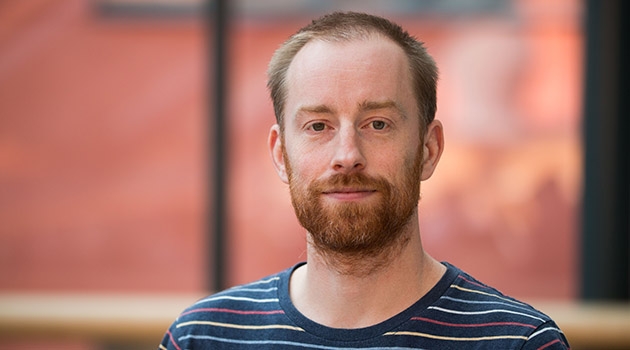New measuring tool to improve radiation safety in Chernobyl
Hello there... Peter Andersson, researcher in the Division of Applied Nuclear Physics (part of the Department of Physics and Astronomy), now setting out to measure airborne radioactivity in the wrecked Chernobyl nuclear power plant. What exactly will you measure?
“We plan to use xenon meters to monitor the fuel left in the ruined reactor. Xenon is a noble gas and its radioactive isotopes (radioxenon) arise during nuclear fission. The advantage is that it can be measured in extremely small concentrations.”
Why does it need to be done?
“Safety’s essential for the workers there. They need to know that the fuel mass from the destroyed reactor won’t suddenly become critical, and a chain reaction arise. About a year ago, the media reported a rising neutron flux (a measure of the intensity of neutron radiation, determined by the neutrons’ flow rate). The reason is thought to be that it had rained before, and when the water evaporates it can increase – but also lower – reactivity. Determining the cause requires a different way of measuring from the existing one. In Chernobyl today, they have a system using neutron sensors, but they’re positioned too far from the focus of interest, the fuel mass, and with unknown material in between.”
What kind of instrument do you have to use?
“The Swedish Defence Research Agency (FOI) has developed an extremely sensitive radioxenon sensor, the Swedish Automatic Unit for Noble gas Acquisition (SAUNA). It’s designed not to measure the radioactivity of a ruined reactor, but to detect nuclear test explosions. We want to evaluate whether it can be used for monitoring in Chernobyl.”
What is your part in the project?
“I was the one who came up with the idea that we can have radioxenon as a fission signature in the damaged reactor and that it can be useful. At Uppsala, we’ve also calculated how much is produced by the destroyed reactor core and made models that can be used for modelling xenon production, decay and movement throughout the building.”
constructed after the 1986 accident, is located in-
side the New Safe Confinement shelter.
Photo: ChNPP.
When can you go there?
“The Swedish Ministry for Foreign Affairs not only advises against going to Ukraine right now, but is also recommending Swedes there to leave the country. We’d planned to take measurements in 2022 and take the sensor there in the spring. We’ll see if that works out, but in the meantime we’re doing preliminary measurements jointly with the state-owned enterprise in charge of Chernobyl Nuclear Power Plant (ChNPP) and the Institute for Safety Problems of Nuclear Power Plants (ISPNPP). We visited Chernobyl in November last year, when we planned where to position the instrument and how their existing air filtration and ventilation systems can be used to feed it with air from the shelter.”
The project is a collaboration between ChNPP and ISPNPP in Kyiv, FOI, Uppsala University and the Swedish Radiation Safety Authority.
Åsa Malmberg
Facts about the Chernobyl incident
During a safety test at the Chernobyl power plant, Ukraine, on 26 April 1986, a core meltdown took place in the Number Four reactor. Radioactive material spewed out in the explosion and dispersed by winds to much of Europe, including Sweden. To prevent further spread of the radioactive fallout from the open core, a massive steel and concrete structure to encase it (“sarcophagus”) was built. This started to disintegrate after only a couple of years, and in 2016 the remains of the ruined reactor were sealed in with a new, additional encasement. Worldwide, the Chernobyl disaster is classified as the most serious nuclear accident in history.

